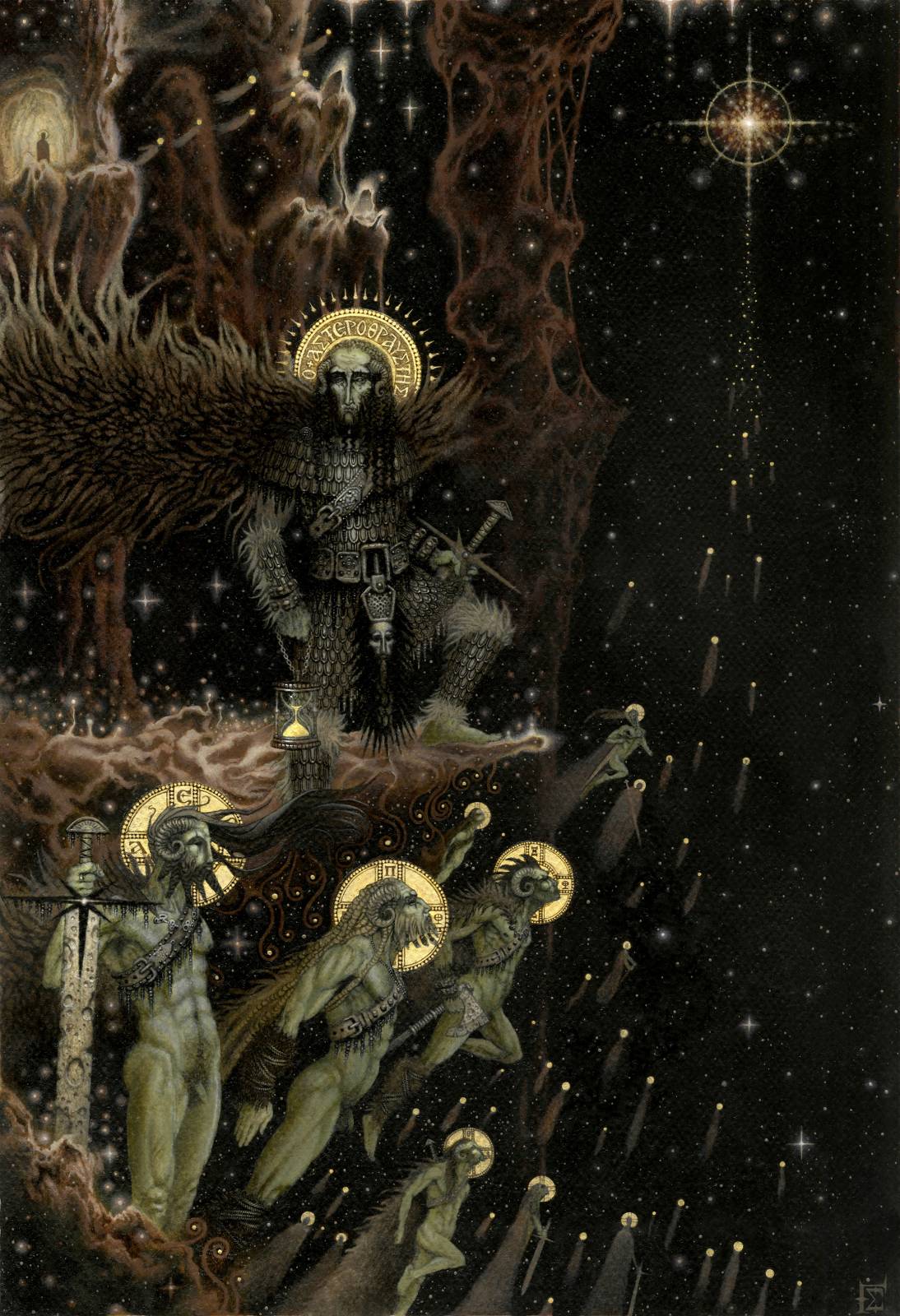
Title: …then came men to slaughter the stars Size (width x length): 11”x16” Medium(s): oil, gold leaf, shell gold Technique(s): glazing, flat gilding, lettering on gold leaf Surface(s): soft press watercolor paper mounted on masonite Book: Astromythos: Book Two “Old historical paintings and Byzantine iconography inspired this one and the name on the main character’s halo-helm means star-breaker in modern Greek.” shares the artist. “Star-slayers, the evil human warriors in Astromythos Book Two, hasten off to destroy the stars with their moonflesh weapons in a cruel act vengeance.”
This month, I was able to have an insightful conversation with fantasy artist and author Jon Sideriadis. We talked about his adventurous cosmic tales, worldbuilding and the life of seeing the world through storytelling.
You are a visual storyteller. How did that journey begin?
Jon: I’ve always loved telling my own stories, even before I learned how to draw. This love for storytelling started when I was about six years old while playing wizards and warriors in the woods with my friends. I recall telling a story about a troll that lived in the woods with blueish-green painted, fallen limbs and branches that cursed the forest with a magic plague: all of which my friends actually believed, at the time. I still feel bad about this because it made one of my friends run home in a fit of fear, which was not my intention!
I spent much of my boyhood in the woods, catching salamanders and frogs or playing with my 1980’s action figures in ponds and brooks by myself. During that time, my mother would often read Greek mythology to me and I loved hearing about characters such as Hercules and Theseus. As a Greek-American, I grew to appreciate the stories of my forefathers and consider Homer and Hesiod as my heroes.
In college, I was dying to be a production designer in the film industry, wanting to tell stories with my characters and settings on the big screen. So, I worked in Los Angeles for several years at Tatopoulos Studios. It was quite exciting to sculpt monster maquettes and foam latex makeup for movies like Underworld: Evolution and Silent Hill with the creature effects team. The initial monster maquettes were made with oil clay or wax resin that needed to be heated in a hot plate before sculpting. These maquettes were used as reference material to later sculpt life-size monsters using the actor or stuntman’s proportions, then covered and made into molds with silicone rubber. After removing the silicone mold from the life-size clay, the molds were filled with liquid foam latex that dried as a flexible, flesh-like material. Before the actor wore this foam latex outfit on set, it would typically be airbrushed to add colorful flesh tones, and applied like makeup to the actor’s skin with liquid latex. Once dry, the liquid latex would be painted with makeup sponges or airbrushes to blend the foam latex colors and the actor’s skin tone seamlessly. I learned a great deal about character design there, which helped me become a better storyteller later in life. This is also where I learned how to use Photoshop while working on the 1998 Godzilla film.
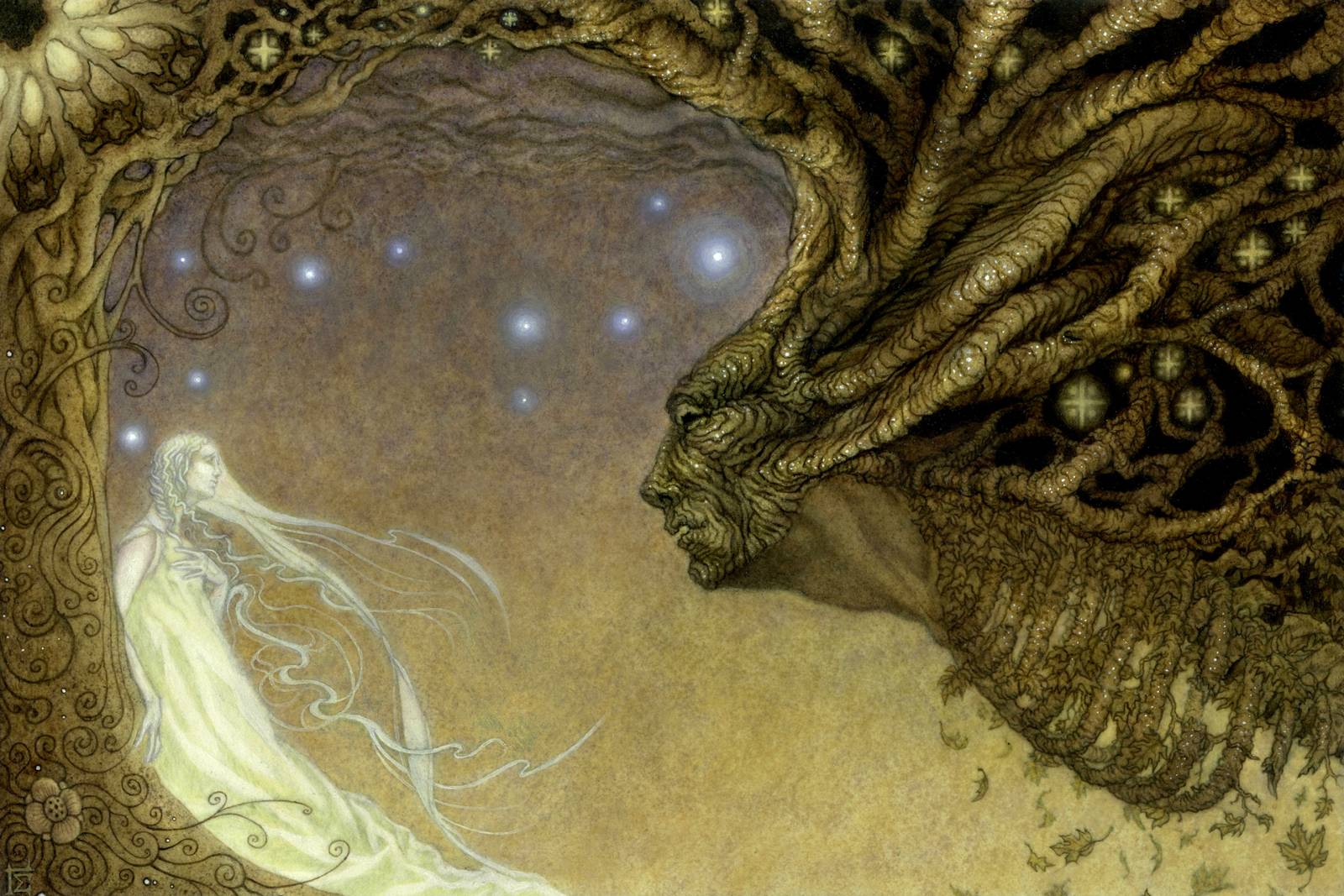
Title: The Fall Size (width x length): 11”x17” Medium(s): oil Technique(s): glazing Surface(s): soft press watercolor paper mounted on masonite Book: Astromythos: Book Two “This is the story of Halka and Apteros. Halka’s uncle strives and fails to protect the orphaned Halka. As a punishment, he is magically transformed into a tree to which she must part to pursue her destiny,” explains the artist. “The work is about spiritual death and rebirth, inspired by the regenerative qualities of deciduous trees and stars. The colorful leaves they shed recall the colorful deaths of stars in supernova form, shedding pieces of themselves in a brilliant display and using them to nurture their offspring.”
Where do your stories come from and how have they evolved?
Jon: My stories and illustrated book series Astromythos come from my sketchbooks and my fascination with astronomy and mythology. I’ve always been captivated by old fairy tales, myths and fables, dreaming that one day I would tell my own allegorical tales in a cosmic setting. After taking my first astronomy course in college, I sketched my first anthropomorphized star characters between notetaking in class.
My stories really evolved after I started reading books written by Joseph Campbell, his contemporaries and authors like Bruno Bettelheim. These authors analyzed myths, fairy tales and folktales so well that they helped me understand the brilliant structure of such timeless stories. This made it much easier for me to transform fun ideas for paintings and stories into powerful and meaningful tales when I became an adult.
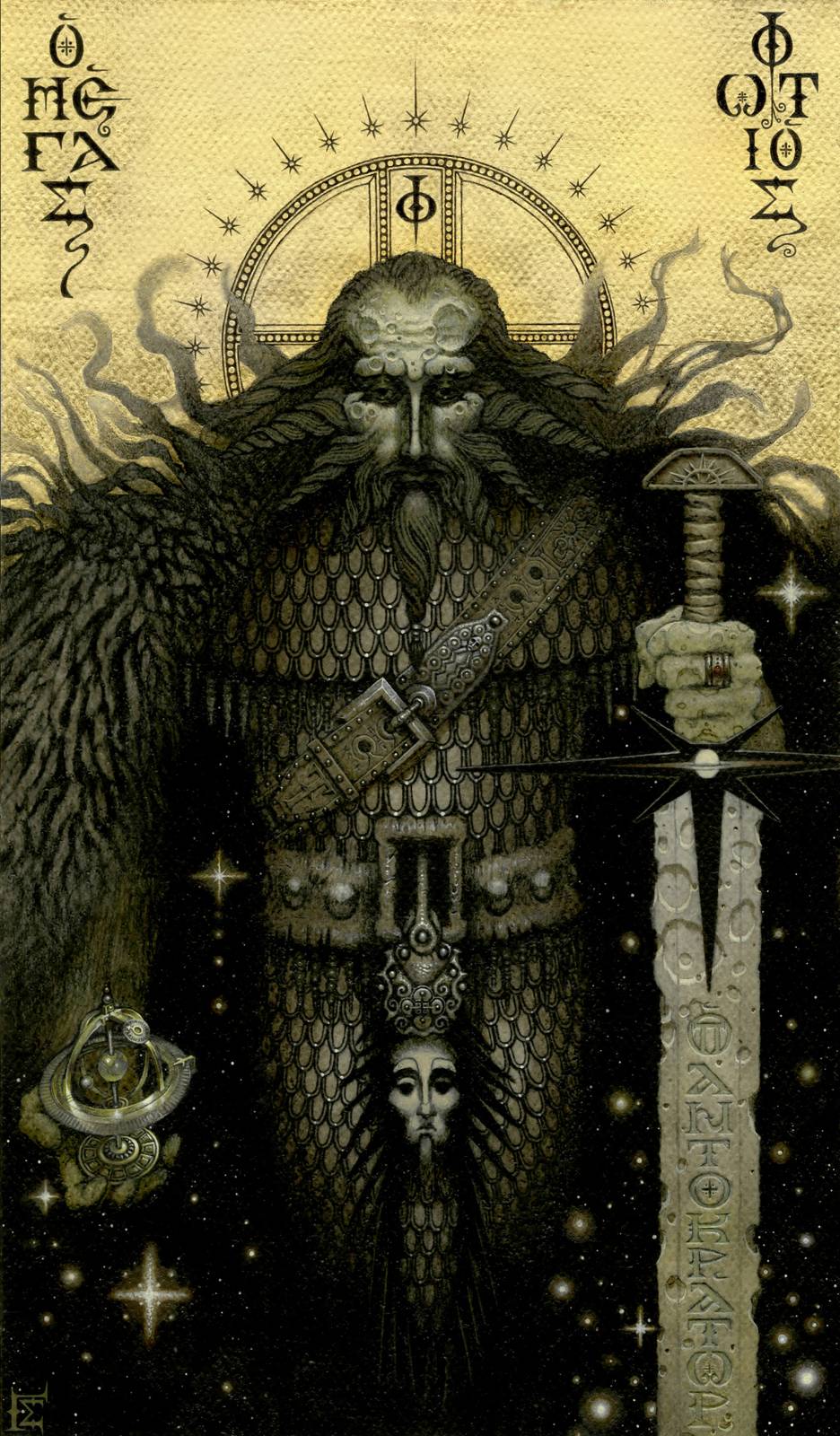
Title: Pantokrator Size (width x length): 11”x16” Medium(s): oil, gold leaf, shell gold Technique(s): glazing, shell gold blending, painting on gold leaf, masking Surface(s): soft press watercolor paper mounted on masonite Book: Astromythos: Book Two “I’ve always been inspired by the stained-glass windows in my Greek Orthodox cathedral, namely the icon of Saint John. The facial structure and composition are fascinating and make for such great character designs. There is something hauntingly beautiful about Byzantine art, and I aim to replicate this evocative quality in my own work,” shares the artist. “This character becomes the king of mankind in Astromythos Book Two. He is corrupted at a young age by a photovore (a black hole spider star) and works mankind into his evil will. He’s depicted as a cratered husk of a man beneath a golden sky with a cloak of captured stars. The barren moon-like flesh is symbolic of the emptiness in his heart: the unexplainable sadness of the black hole, as described in the book.”
What draws you to work on a particular story or series? Is there a thread that connects the different stories, books and the art?
Jon: I’m naturally drawn to work on my own story and world, but occasionally I take some time to work on other projects like monster manuals, board games and fantasy genre books. I had worked for many years as a freelance illustrator and professor on films, comics, sci-fi/fantasy novels, logos, trading cards and book covers, until my book series became so successful that I no longer needed to do freelance work to pay the bills. I’m still drawn to other authors’ and game-designers’ creations. J. R. R. Tolkien is the reason I became an author and professor, so any series or story in that vein draws my interest. For me, the thread that connects such stories, books and art is Greco-Roman-inspired or Nordic literature with golden age illustration aesthetics.
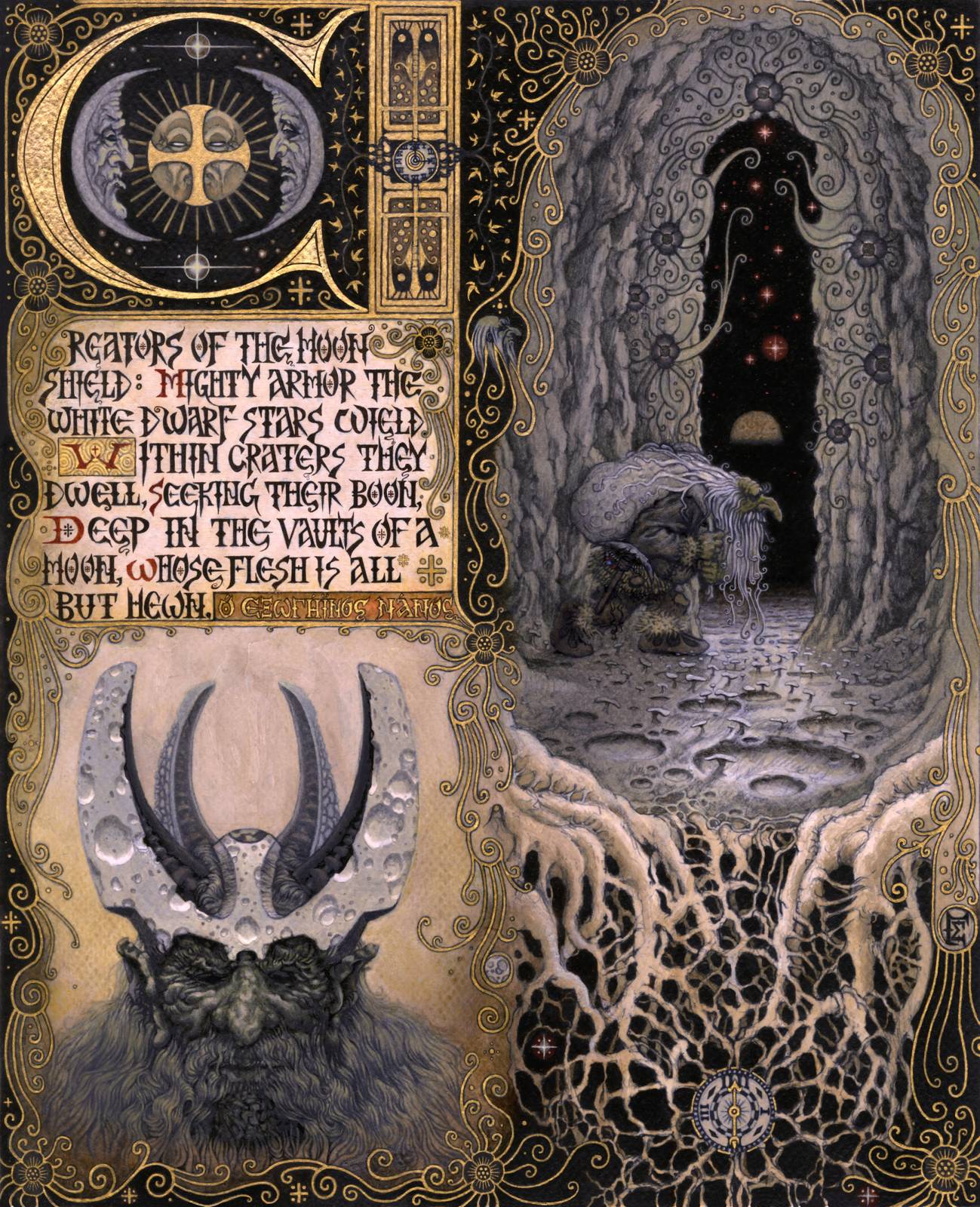
Title: Extra-terrestrial Dwarves Size (width x length): 11”x14” Medium(s): watercolor, oil, gold leaf, shell gold, silver powder Technique(s): flat gilding, hand lettering, silver powder glazing Surface(s): soft press watercolor paper mounted on masonite Book: Astromythos: Lair of the Spider Lord “The nanos and their king, portrayed here, were banished to the moon to deeply mine into the living core of a mighty mineral called Moonflesh. Dulos, the king, struggles to help his people thrive in this barren place, as he watches his green home planet helplessly from afar and the corrupted men that destroy it,” explains the artist. “Monk marginalia, early astronomy art and Byzantine calligraphy inspired this work. I hand-lettered the text with a brush and oil paint. It took three days to finish and add text embellishments. This is why I now choose to ink my text instead.”
How do you come up with your ideas and concepts? Where do you look for inspiration? Does research play a role in the conceptual development of your work? Explain
Jon: Greek Byzantine art, which I grew up seeing every Sunday at church, inspired me to use mediums like gold leaf and to add calligraphy to my artwork. In college, I used to go to class early every morning to draw my own subjects in my sketchbooks and to write feverishly, as an aspiring world builder. I also spent my Saturdays visiting the campus library where I became inspired by John Bauer, Gustave Dore and Howard Pyle. Astronomy, mythology, physics, biology, modern and ancient poetry, Tolkien, Homer and William Blake are my other influences. This made it much easier to later teach Art History for three years at Paier College in Connecticut. There, I focused on such movements in art history as Classicism, Romanticism, Symbolism, Byzantium and Medieval art. Davinci is my favorite artist, hands down. My favorite books are Hero with a Thousand Faces, Stephen Hawking books, Pindar’s Victory Songs, The Kalevala, the Volsungs, the Poetic Eddas and The Hobbit. I often watch Shakespeare movie adaptations and nature documentaries for video inspiration, usually during my studio lunch breaks.
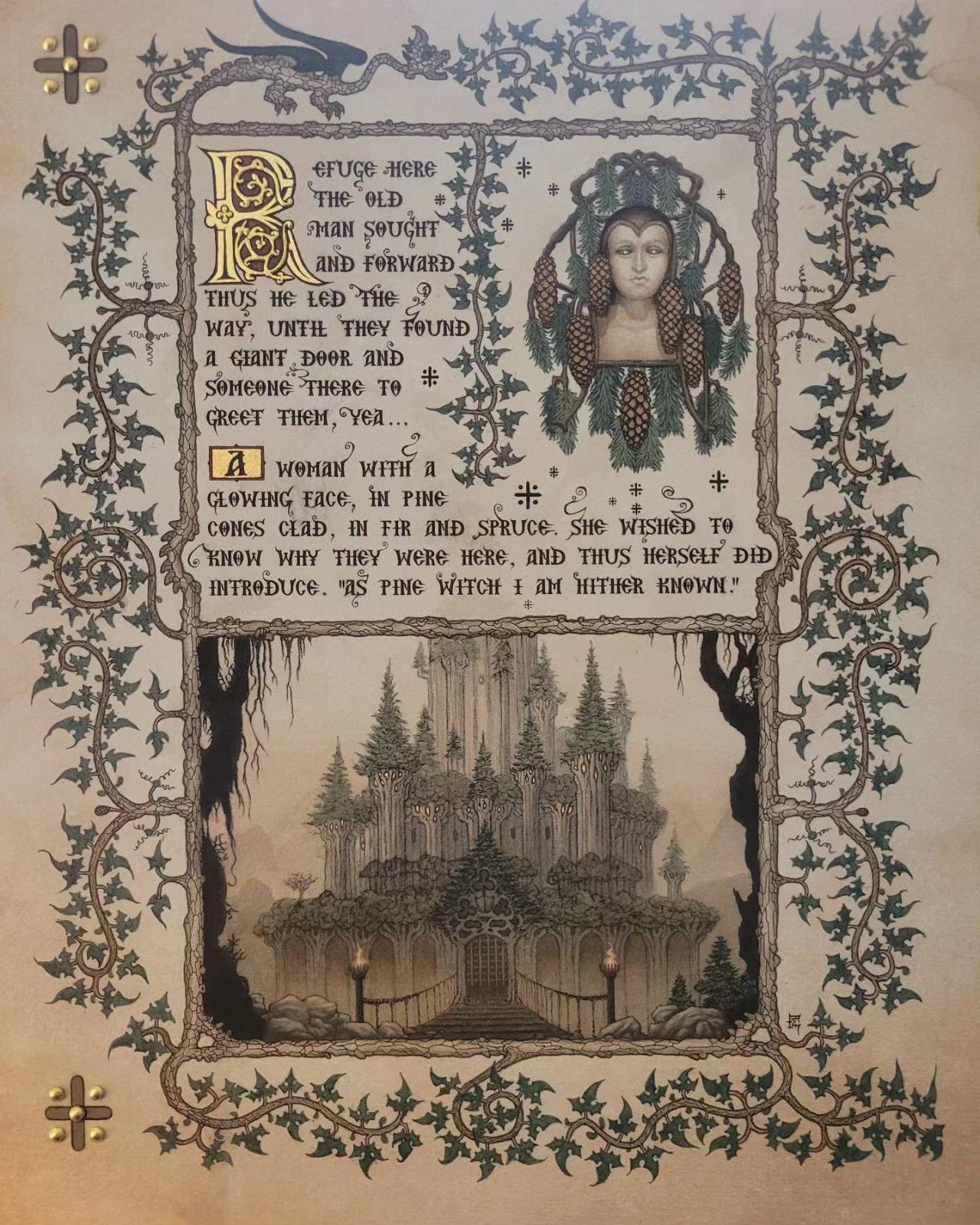
Title: Castle of the Pine Witch Size (width x length): 14”x18” Medium(s): watercolor, gold leaf, ink, acryla-gouache Technique(s): flat and raised gilding, hand-lettering, graded wash Surface(s): soft press watercolor paper Book: Astromythos: Book Two “The work portrays the Pine Witch, the alias of my female protagonist in Astromythos Book Two. Also pictured is her castle, which is a castle grown by nature out of pine trees,” shares the artist. “Illuminated pages in Byzantine and Hungarian gospel books were my inspiration.”
Research has played a key role in my world creation. Many of my characters and story ideas come from art and nature books that I’ve collected over the years. I’m also keen on taking photos in nature and at museums. I’ve even based one of my Introduction to Illustration character assignments on the phenomenon of pareidolia, which is the human tendency to see faces and creatures in trees, rocks and clouds. I used this to find the narrator of my book series in the Horsehead Nebula image at the Boston Science Museum, for instance. This was very useful when designing my anthropomorphized stars, moons, comets and black holes. I also remember looking through old renaissance astronomy books for drawings of comets, which helped my comet character sketches look more like old-world character designs.
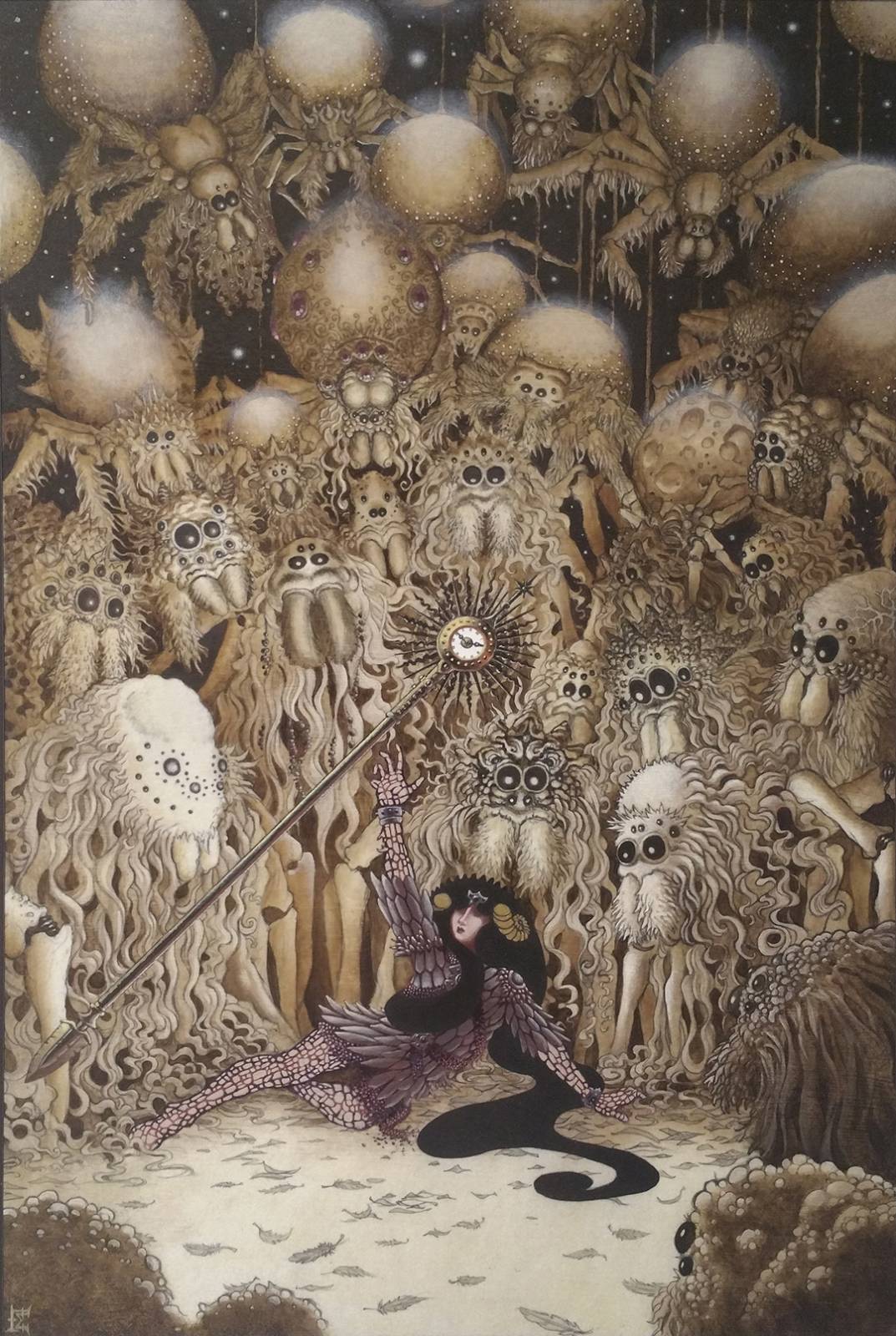
Title:Kykla and the Chronovelos Size (width x length): 11”x17” Medium(s): watercolor, oil, shell gold Technique(s): watercolor underpainting with oil finish, washes, glazing, gilding Surface(s): soft press watercolor paper mounted on MDF board Book: Astromythos: Book One “The arrow of time, or Chronovelos, has arrived as destined and Kykla, the warrior-queen, reaches for it. In this coming-of-age myth, Kykla struggles internally with an omen of impending doom that she had received as a girl. She strives throughout the story to harness the power of time so that she can use its golden weapon to destroy the photovores before they devour her,” says the artist. “I was inspired by John Bauer’s compositions, where he masses or shape-welds multiple monsters. I was also inspired by Gustave Klimt’s female character designs.
Do you use journals and sketchbooks in your process? If so, can you tell us about that practice?
Jon: I started drawing in sketchbooks in high school and filled several writing journals in college. I still use my sketchbooks for all my commissions or for any Astromythos content. I had soon made a habit of recording my ideas on napkins, notepads and receipts, when I didn’t have my sketchbook handy. This is because some of the best ideas come to us when driving, standing in line at a store or while hiking and linger just long enough to be recorded. That’s why I started recording them on my phone notes as quickly as possible so as not to regret it later. Then, after graduating college, I collected all my sketchbooks and writing journals, flagged the important pages and drawings with sticky notes and organized them all on my computer. It took over a month to file them all into folders and categories, but it saved me an incredible amount of time when I finally sat down to start writing and illustrating Astromythos. I’d recommend this to anyone that has hundreds of sketches and/or pages of story ideas. It’s so important to be organized. I still scan in many of my sketchbook characters, print them out and transfer them to Bristol Vellum paper with graphite transfer paper before I start my final drawings.
Describe your artistic working environment.
Jon: I keep almost everything in this little room upstairs in my house. I like to cover the walls with my own paintings, clippings and sketches to maintain a healthy sense of world-immersion. I believe that every established worldbuilder should do so. That is to say, if studio walls display mostly the work of other artists, one runs the risk of borrowing too much from the artwork of others rather than the clippings, musings and sketches of their own, all of which have yet to find their place in the grand scheme of the world they’re creating. I keep a mirror on a nearby wall to my right so I can hold up and check my paintings for mistakes and such. It’s almost like seeing my work through another’s eyes. Next to that, is my floor easel, where I paint occasional large-scale pieces. My laptop and table easel usually sit on top of my desk before a flat-screen monitor, where I either write my manuscripts or display my digital reference materials while painting. To the left of these is my precious p900 printer, where I print my drawings on watercolor paper to be mounted on Homasote or MDF board, and where I print giclée prints for conventions. It may be more cluttered than other artists’ studios because I have my author’s copy books, sculptures, miniatures, packaging materials and other objects that one would keep in a storage space or small warehouse.
In addition, I keep frames nearby because I started framing my work in 2019 and it still saves me thousands of dollars. It’s really not that difficult and the equipment pays for itself after one convention weekend.
Are your visual surroundings important to you? Do you travel? How does your environment affect your ideation, process and approach?
Jon: My visual surroundings are very important to me. The walls in the other rooms of my house are adorned with prints and paintings that I’ve purchased from my favorite illustrators and friends. My wife and I have many plants, miniatures and trinkets throughout the house to keep us happy and provide inspiration when not in our studios.
In the backyard, I tend to a small garden and we live in a woodsy part of the state where we hike with our dog and newborn son, Theseus. I love traveling and wish I could go to inspiring locations here and abroad more often. Last year, my wife and I traveled to Ireland and Scotland for our honeymoon, where some of the photos we took served as reference material for Astromythos Book Two. I taught worldbuilding and art history in Greece many years ago to my Lyme Academy students, and this inspired me to travel more in search of obscure paintings in tiny chapels, castles and exotic ruins. I still believe that traveling is extremely important for all artists. It helps boost the ideation process at an incredible rate, and it helps artists produce less derivative work. If anything, it helped me get back in touch with my heritage and develop new techniques like raised gilding, punching and chasing.
Describe a typical working day and how you balance teaching with a professional career. Also, talk about how one influences, inspires and informs the other.
Jon: A typical day for me, at the moment, is dedicated almost entirely to my wife and one-month-old baby. In time, as I grow more accustomed to balancing parenthood and work, I plan on returning to my former routine, which starts with breakfast and emails and ends with studio time. I once taught as a full-time professor when I ran the Illustration Program at the University of New Haven. I had virtually no studio time during the school year until my books and artwork became more popular and I was able to return to part-time teaching.
Now, I work in my studio every day but Fridays during the school year at Tunxis College, where I teach Painting I and II. Before meeting my wife, I would write and paint seven days a week for many years, but now I take weekends and nights off to spend more time with her and my son. It was very hard for me to make this transition, but I got used to it after a few years. Still, on an ideal studio day, I work six to eight hours with a 30-minute lunch break.
Teaching demands a great deal of learning on the teacher’s part. A teacher must know everything about the subjects they’re teaching, even if they’ve never studied them before. So, after teaching Illustration I, II, III, Art History, World Building, Concept Art, Digital Art and various other courses, it really informed my personal work. It certainly helped me focus more on fine craftsmanship and mixing mediums more seamlessly while constantly comparing my work to the greatest figures in art history. I made connections with so many talented instructors in the meantime, which led to new commissions and gallery shows throughout the country. I found my way into the convention circuit because of my connections with these other instructors.
You are a gilder, using various materials onto the working surface. Can you talk about the materials you use, the technique(s) you use and how gilding enhances the work as well as your creative process and approach?
Jon: Gilding enhances my work and creative process. With it, my paintings appear more like they were painted in another time and place like a monk’s chamber or an alchemist’s lair. It also appeals to more fans with uncommon interests like calligraphers, astronomers, and historians, which is quite exciting. Gold is a mythological metal. It was used by my ancestors in Byzantine icons, manuscripts and on Ancient Greek architecture. This is primarily why my paintings are so embellished. I studied the old medieval monk techniques in order to fully understand the intricacies of gilding and gilding materials like rabbit skin glue, Armenian bole, seamless gilding and shell gold. I use authentic gold leaf, which I typically order from a little artist supply shop in Thessaloniki, Greece. I lean more toward the loose leaf, because it’s easier to use when gilding raised or textured surfaces. Paten-transfer gold leaf is better for flat gilding. I only apply gold leaf to very important objects or monograms in my paintings, so as not to overuse it. It just doesn’t have the same impact if it’s arbitrarily placed or used too abundantly. Placement is everything.
I seldom use “punching” in my gilding process, which is the art of tapping small precisely-placed dents or depressions with dotting tools or awls. This appears in many Greek Byzantine halos. I often use flat or raised gilding which I have researched and tried all kinds of techniques. I find instacoll to be the most effective and authentic material for my technique. I apply it with a small round watercolor brush, usually a number four or five, and it dries raised, catching the light like bas-relief sculpture. I’d tried using plaster, plaster gesso and metal accents, but none quite had the durability, longevity or helped achieve the desired effect. I now use the Mona Lisa brand adhesive size, because it helps gold leaf stick to almost anything. After sliding my gold leaf from its book onto wax-paper with a four-inch gilder’s tip, I burnish it onto my substrate with a variety of agate burnishing tools. If I need to paint on top of my gilded surfaces, I use Mona Lisa brand gold leaf sealer. I’ve even used this to paint letters on gold leaf with oil media. I apply two to three layers of gold leaf to every painting to cover any pinholes in the leaf and to increase luster. I then polish the gold leaf with cotton or silk. I advise against sealing gold leaf too often, as it significantly decreases the brilliance of the raw gold. I only do so with sealer if I need to paint over it. Finally, I paint small details with shell gold, because it’s not as shiny, but it’s perfect for accents, fleurets or scrolls. This is composed of gum Arabic, a bonding agent similar to that in traditional gouache, and real gold in the form of a small pea-sized tablet.
Do you experiment and explore other approaches, materials or media to keep your process fresh?
Jon: Gilding has inspired me to experiment with inlays and to use materials like meteorites to embellish my gilded pages. My living-meteor creatures are mentioned in one of my paintings in the hand-inked text, so I decided to purchase tiny meteorites from a gemstone seller online. They were too small to melt down and pour into molds, so I flattened the pieces in a 30-ton press between two slabs of tooling steel. I was later able to Dremel the flattened pieces into tiny symmetrical discs. I drilled tiny holes through my MDF-mounted painting, then secured them with epoxy.
A few years ago, I learned how to build ancient pebble mosaics with two mosaic artists from Northern Greece. We made a replica of the Lion Hunt mosaic in Pella for the Greek Amphitheater here in Storrs, Connecticut. I’d like to incorporate this or Byzantine mosaic techniques in my work somehow in the future.
I’ve more recently been experimenting with Holbein acryla-gouache, as a barrier medium while working with watercolor. This brand, unlike traditional gouache, doesn’t lift as easily as other acryla-gouache brands. I’m able to mask off detailed parts of my painting with this and then use watercolor or ink on top, which sinks into the cracks and areas untouched by the acryla-gouache that need to be darker. This works very well when painting cobblestones, castles and dappled or pitted textures.
I just finished a mixed-media illustration for Book Two of Astromythos by adding a few lengths of laser-cut Noch brand ivy. I soaked them in dark green acrylic ink for 15 minutes and stuck them to my painting with PVA glue. This was a time saving experiment that I really enjoyed because I build scale models in my spare time and always wanted to use such materials in my professional work.
I’m currently combining Kroma crackle medium with flat gilding to produce a gilded crackle effect. I gild without sealing the gilded surface, mix dark acrylic paint with the Kroma medium, brush it on generously, then dry it with a heat gun. Finally, I varnish it with Grumbacher matte medium & varnish. It’s an interesting effect because the leaf will look like it’s cracking through the dark paint like golden lava.
https://www.instagram.com/p/Cn2htPHLtka/
What point in your career do you see as a breakthrough? Be specific.
Jon: I think my biggest career breakthrough was finishing Astromythos: Book One, which took me twenty years of my free time to produce and publish. I wasn’t finding enough freelance work as a college graduate and finished school in the middle of a recession. I thought that if I created my own intellectual property in the meantime, it might land me some freelance jobs in the future. So, I started bringing a few prints and paintings to small craft fairs and trade shows where I could explain my story to customers interested in my artwork. Before long, there was enough interest in my story that I was encouraged to see it through to publication. It wasn’t easy. After creating my own world and mythology, I spent all my free time sketching, researching, building my writing skills and spreading the word. I put so much time and effort into this process that I was able to write a decent syllabus for the first course in my teaching career at the University of Hartford. Thanks to the hype, I found myself at bigger shows like GenCon, DragonCon and IX Arts.
The book is two hundred pages long and contains over one hundred illustrations. Then, the requests started rolling in for a tabletop rpg based on Astromythos, so I wrote and illustrated a fifth-edition compatible adventure for Dungeons and Dragons. That helped sell more copies of my first book and helped me branch out into other products like dice, cards, miniatures, pins and bookmarks based on Astromythos. Now, clients like Random House and Hasbro have approached me with freelance opportunities. So, my twenty years of toil have finally paid off. It’s ironic in a way, because now that I’m offered these opportunities, I am already my own client, so I don’t need freelance work as desperately as I once did. It somehow worked out the way I wanted though, but backwards, for lack of a better word.
Talk about your Kickstarter campaign(s) and how you were able to use crowdfunding to launch your vision into the culture.
Jon: My first campaign was much easier than my second. Traditional publishers didn’t know what to do with my manuscript. It was too “artsy.” I looked everywhere for a publisher, went to New York many times to meet with them, emailed twenty to thirty agents and publishers, and after five years of query letters, I found an online publisher.
I had heard of crowdfunding before, but after attending a Kickstarter panel at IX Arts, it started to make more sense. I finally made a deal with The Art Order. They handled most of the work, including fulfillment, so it was worth the wait. I had been holding onto their business card for many years and talking about my book for at least ten to fans and collectors. And, much to my surprise, the campaign was funded in thirty minutes!
Brian and Wendy Froud wrote the foreword, and I was even able to hire Sean Astin and Elijah Wood to endorse the book through Cameo.com. I gave Sean a signed copy, because he’s my favorite actor, and he was very gracious in person. My life completely changed in this short period of time. On a side note, my shipment from China was completely destroyed due to a blown-out palette, but I did receive my backers’ and author’s copies a year later. I learned a lot from that experience, enough to launch my own campaign three years later for Lair of the Spider Lord.
With the success of my first book, I was able to negotiate a deal with Hit Point Press at my IX Arts booth in Reading, Pennsylvania, where I had some maps and new artwork on hand. I then reached out to all my followers on social media, printed brochures for other shows, took pre-orders and started looking for a manufacturer. I used Facebook and Instagram paid advertising tools, hired YouTube influencers and reached out to my pen pals in other countries for post and sharing requests. I mailed pamphlets to all my friends and family coast-to-coast in the U.S. and asked them to drop them off at their local tabletop shops. I designed all the art assets for the landing page and launch page, while emailing all my Book One customers through my mailing list. I learned how to use iMovie to make trailers and campaign videos. I also produced a large “pre-order” banner for conventions where I brought monster miniature prototypes and unreleased artwork. Working with a manufacturer in China was not easy (especially the dice and reference card templates), but ultimately worth it, because they were always very polite and professional. I risked all my savings on the project, didn’t make any profits from the campaign, but ordered enough copies to make a substantial profit over a long period of time.
You do a lot of conventions. Talk to us about how one-on-one interaction with fans has helped grow your following.
Jon: I love one-on-one interactions with fans. It validates all my hard work and lifts my spirit. I’ve met so many interesting people from all over the world. Running a booth is hard work, but the fans make it fun if you can just get to know them. I was once paid by an Indiana insect professor in butterfly pupae for a painting! Many fans return to my booth every year just to catch up or to grab a drink after the show. They’re almost like family at this point.
It’s so important to have a close relationship with fans and collectors. I’ve visited my collectors’ houses on several occasions and marveled at their art collections. It really shows them that you appreciate their support and often encourages them to collect more of your work. The friendlier one becomes with their fans, the easier it is to distinguish oneself from the other brilliant artists at conventions (especially for new artists that aren’t as established yet).
What do you see yourself incorporating in your work (art and stories) as your vision evolves?
Jon: My first few books took place in space, so I’d like to incorporate more terrestrial landscapes in my work like forests, mountains and waterways. I’d also like to paint with oils again. I’ve used acryla-gouache as an underpainting medium for oil pieces in the past, and it really sped up the painting process. I just love how easy it is to render and blend with oil paint. Combining gilding media with oil is tricky, but I’ve done it before successfully and would like to take it further. Masking material and paper templates were essential to this technique (and not mixing oil with water-based paints or gilding adhesives).
In Astromythos Book Two, the story is driven by environmental protection and cultural preservation, so I’d like to carry that over to Book Three. After completing my trilogy, I plan on producing other books for various age groups based on the Astromythos universe. I have several children’s book stories and more tabletop rpg content in the works. I also plan on collaborating with a friend of mine in the film industry on a screenplay for an animated film or television series.
Is there anything else about yourself or your work that you would like to mention?
Jon: I honestly never thought the world I started inventing in my high school sketchbook would become a successful book series and D&D campaign adventure. I’ve been teaching college students for nearly 15 years, and so many of them take my classes as aspiring worldbuilders. New students share their ideas and show me their own sketchbooks. I remember my struggles as a student when they ask me every year without fail: “How do I make it happen? How do I get my stories and characters out there?” And I tell them: “Sacrifice. If you don’t constantly feel like this is the hardest thing you’ve ever done, you’re not doing it right. You must be 100% immersed in your world and invested in your work at all times (even on weekends) to have what it takes.” It’s such a long and arduous ordeal, and even if it takes twenty years to get published, it will be worth it. On the other hand, if you don’t get published, all the wonderful things you’ve produced along the way will likely land you an exciting job in a creative field.
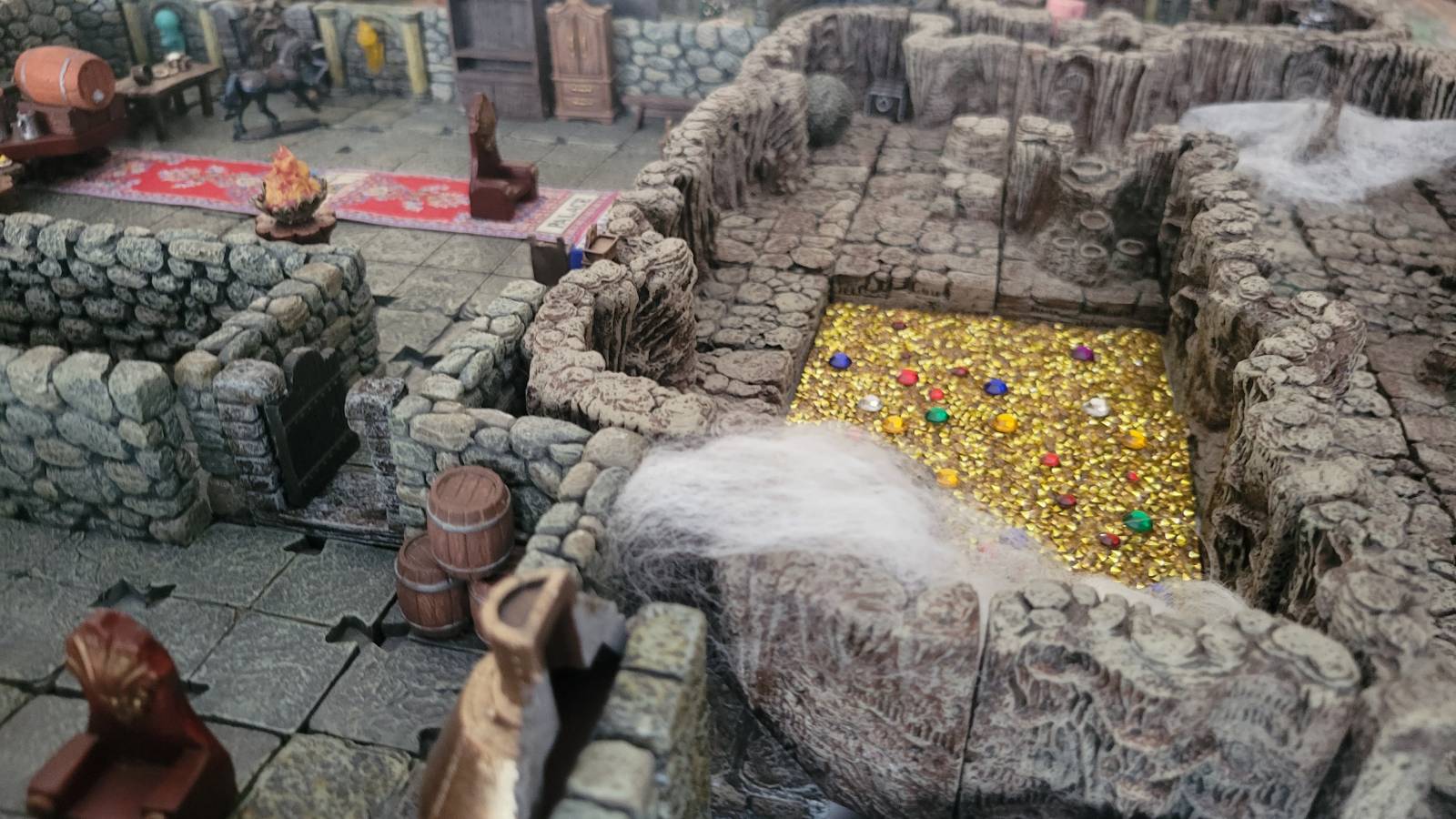
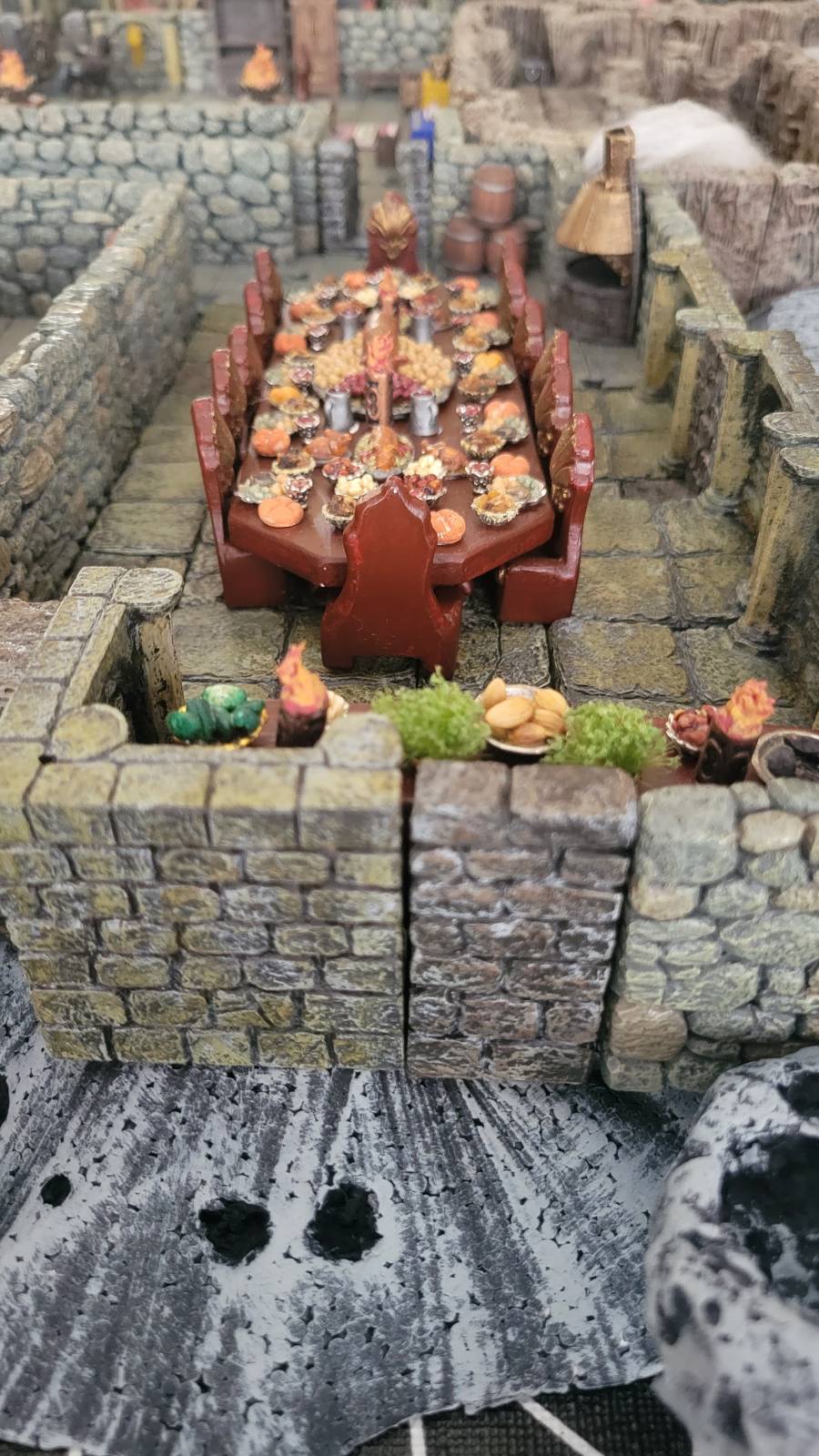
I often compare worldbuilding to the Odyssey, especially for those who both write and illustrate the story of their world. For years, it will seem like a never-ending quest, a voyage on an endless, raging ocean. I’ve produced hundreds of drawings, paintings and sketches, such that it became a way of life. The most unique stories and worlds come from worldbuilders that are engrossed in their world; to the point where they think about it at all times, even if it keeps them awake at night. I draw and write new content for my world every day when I am not teaching. And, I read just about every night with a pencil in hand, so that I can underline good ideas and write my own thoughts and concepts in the margins.
To wrap up, I’d like to mention that creating an original character or an original story is not simple by any means, but it is possible. I firmly believe that new ideas are out there. I do not believe that everything has been done. It will always be possible to create new and original ideas. It’s simply a matter of how much time you’re willing to sacrifice in your life to do so. Simply put, great things take time. Gertrude Stein sat for Picasso ninety times before he finished her portrait. DaVinci spent four years just painting the Mona Lisa. Not to compare myself to my heroes, but these were groundbreaking masterpieces, and they were certainly worth the wait.
You can follow Jon’s work on social media and check out his website at these links:
Website: www.astromythos.com
Social Media:
https://www.facebook.com/jon.sideriadis/
https://www.instagram.com/jonsideriadis/
https://www.youtube.com/channel/UCuzu-yNdhZEAjwPL9WxyXjg
To order specific books:
https://www.astromythos.com/shop/book01
https://www.astromythos.com/shop/pre-order-astromythos-lair-of-the-spider-lord


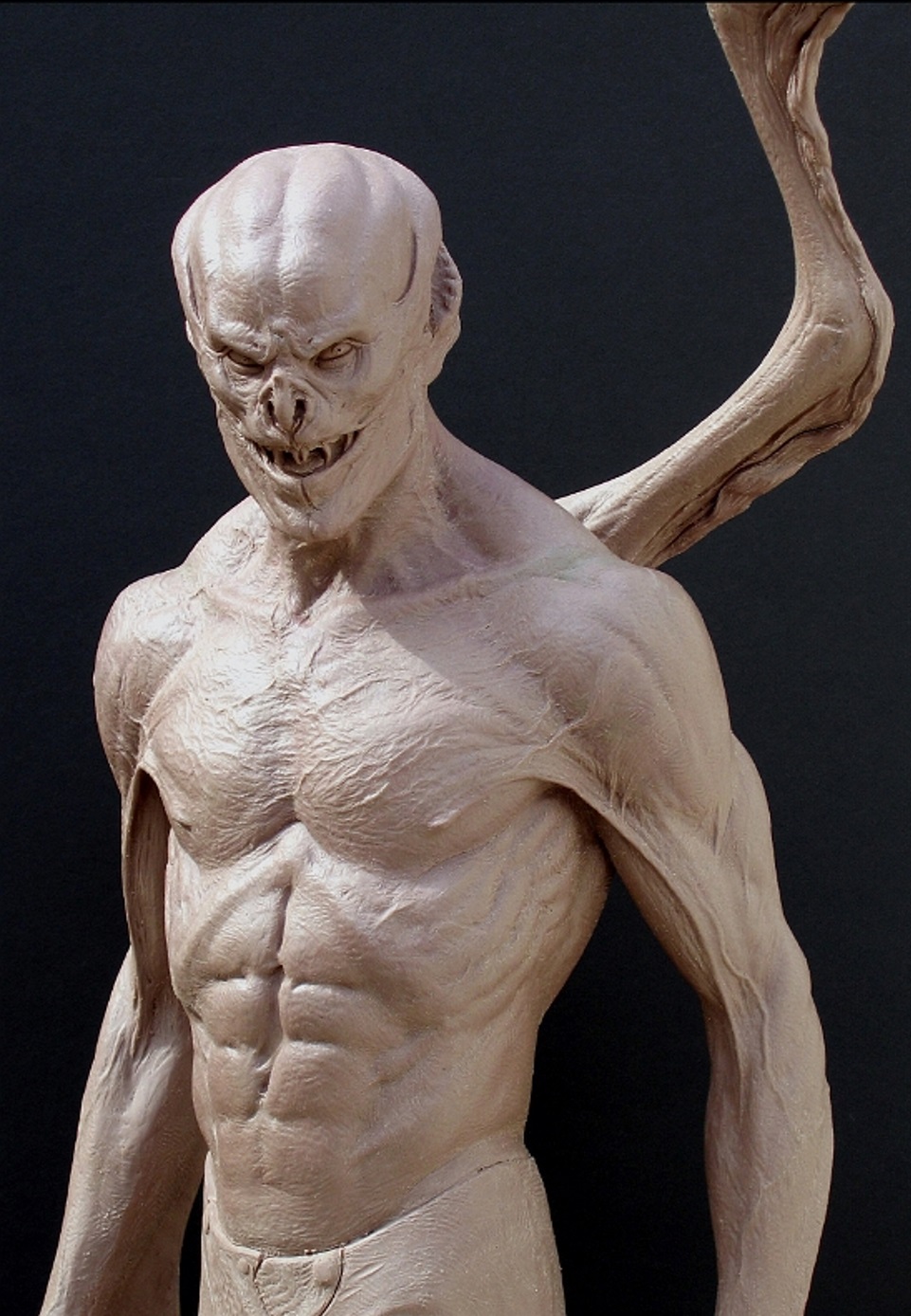

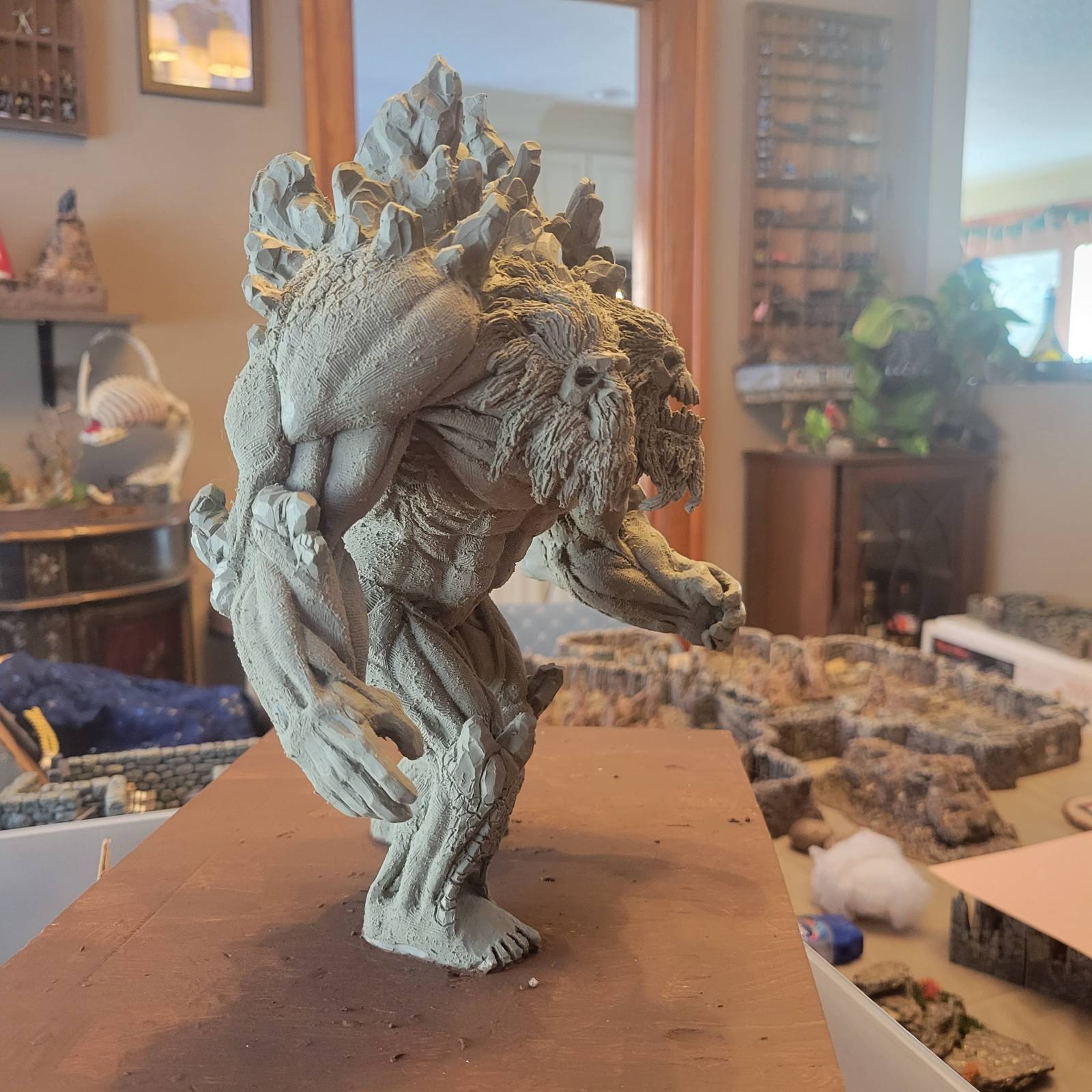
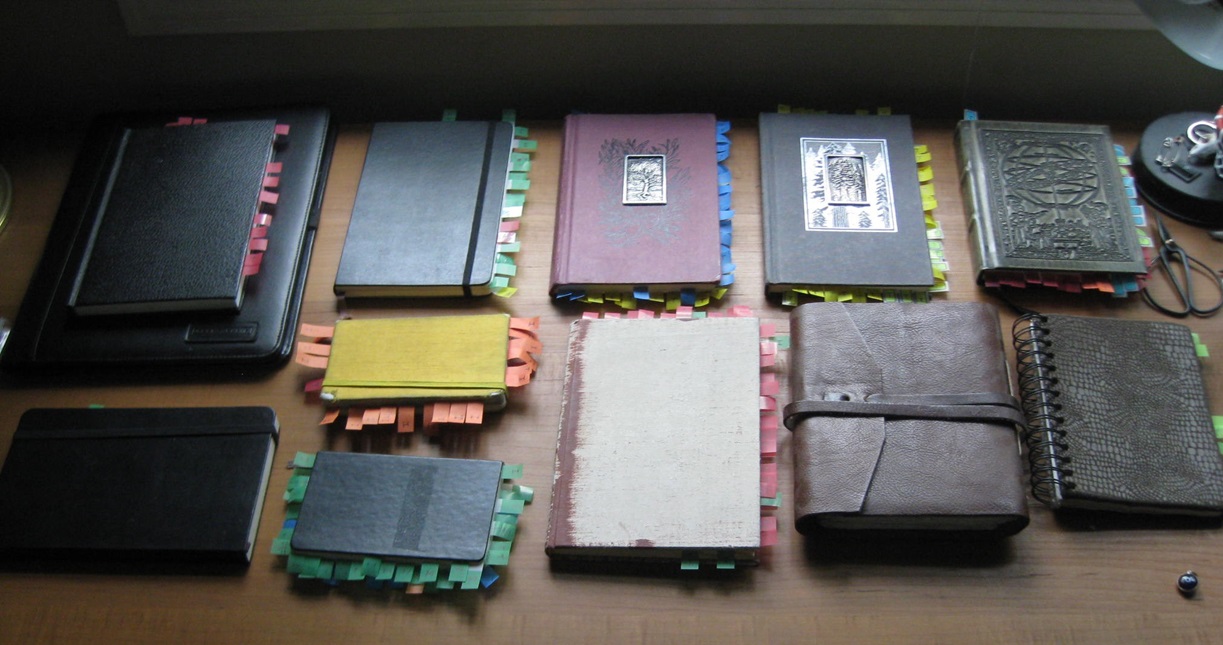


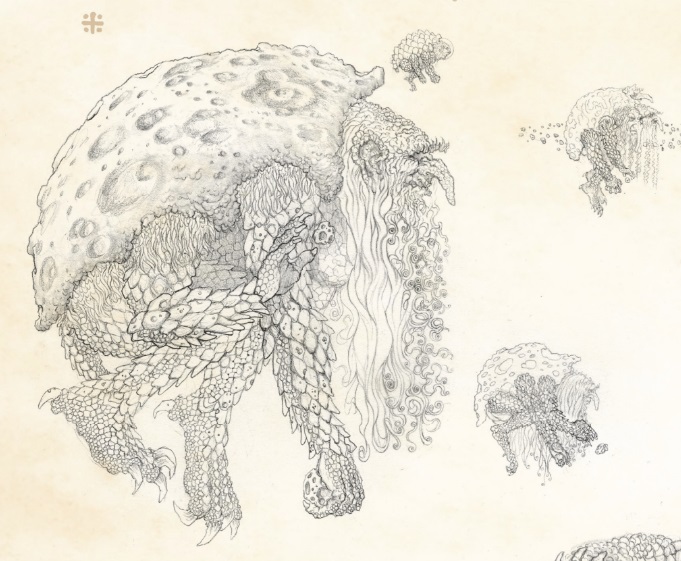




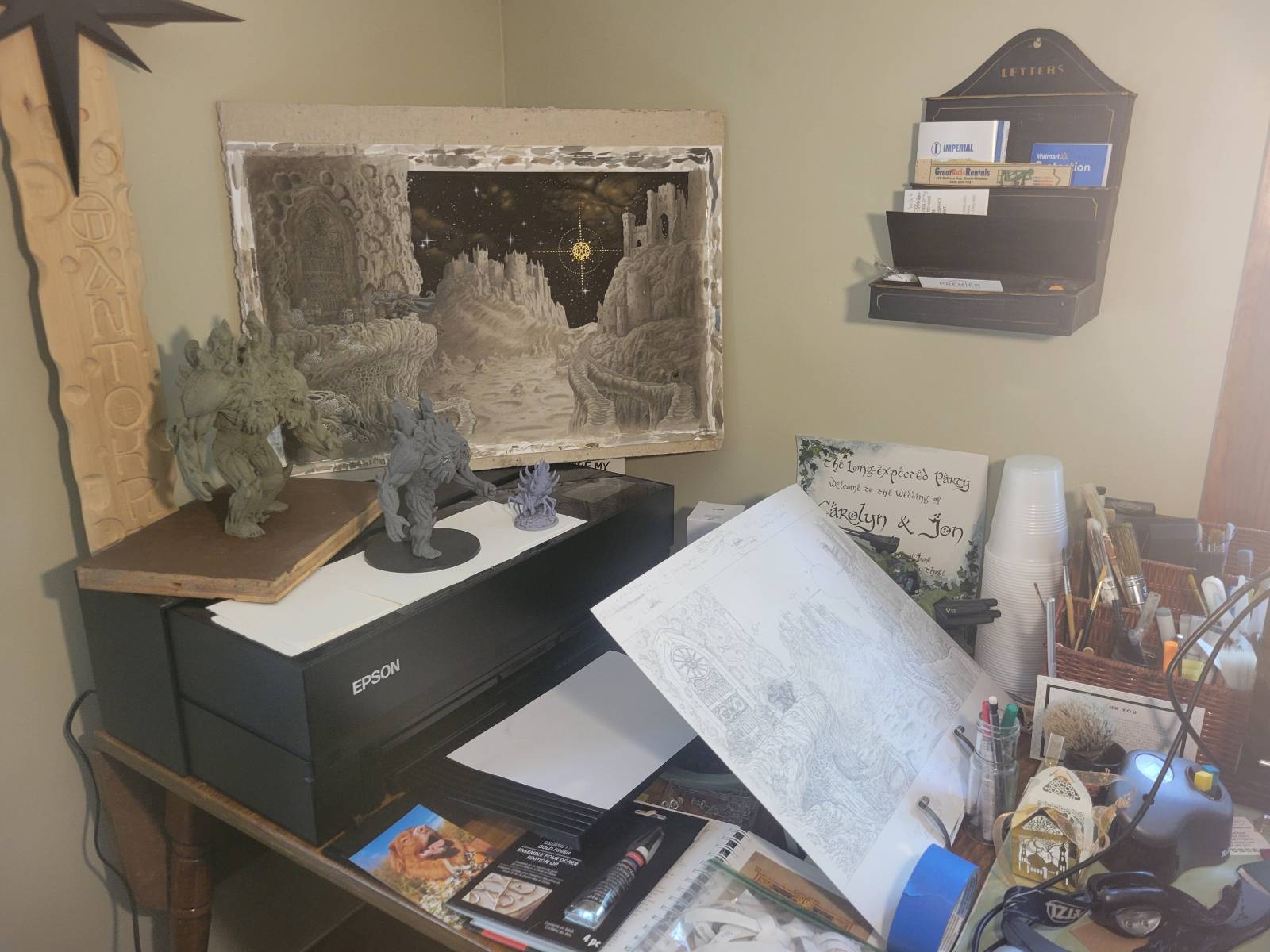



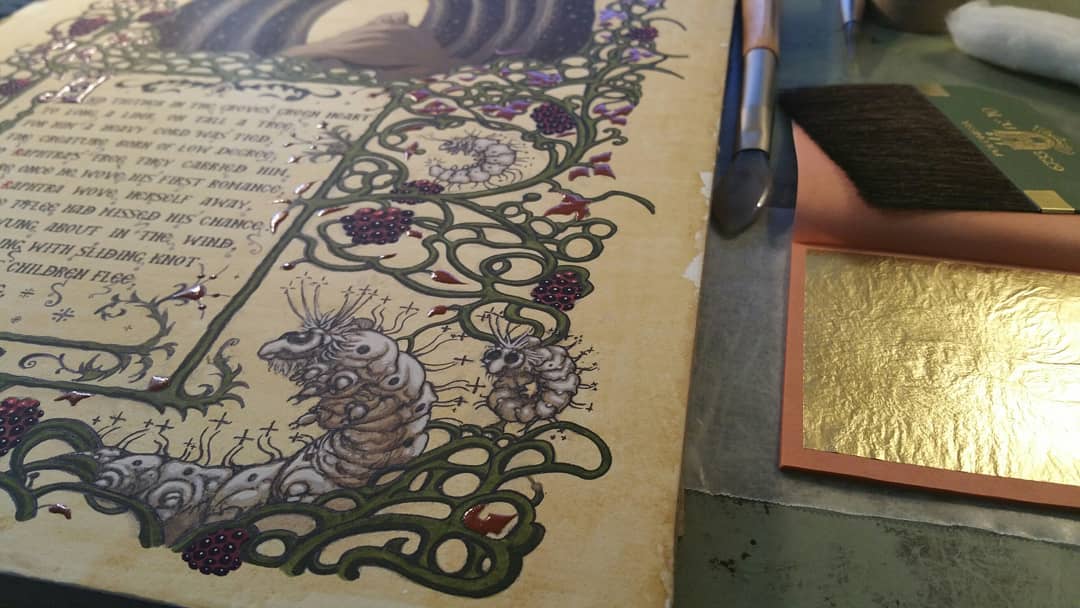


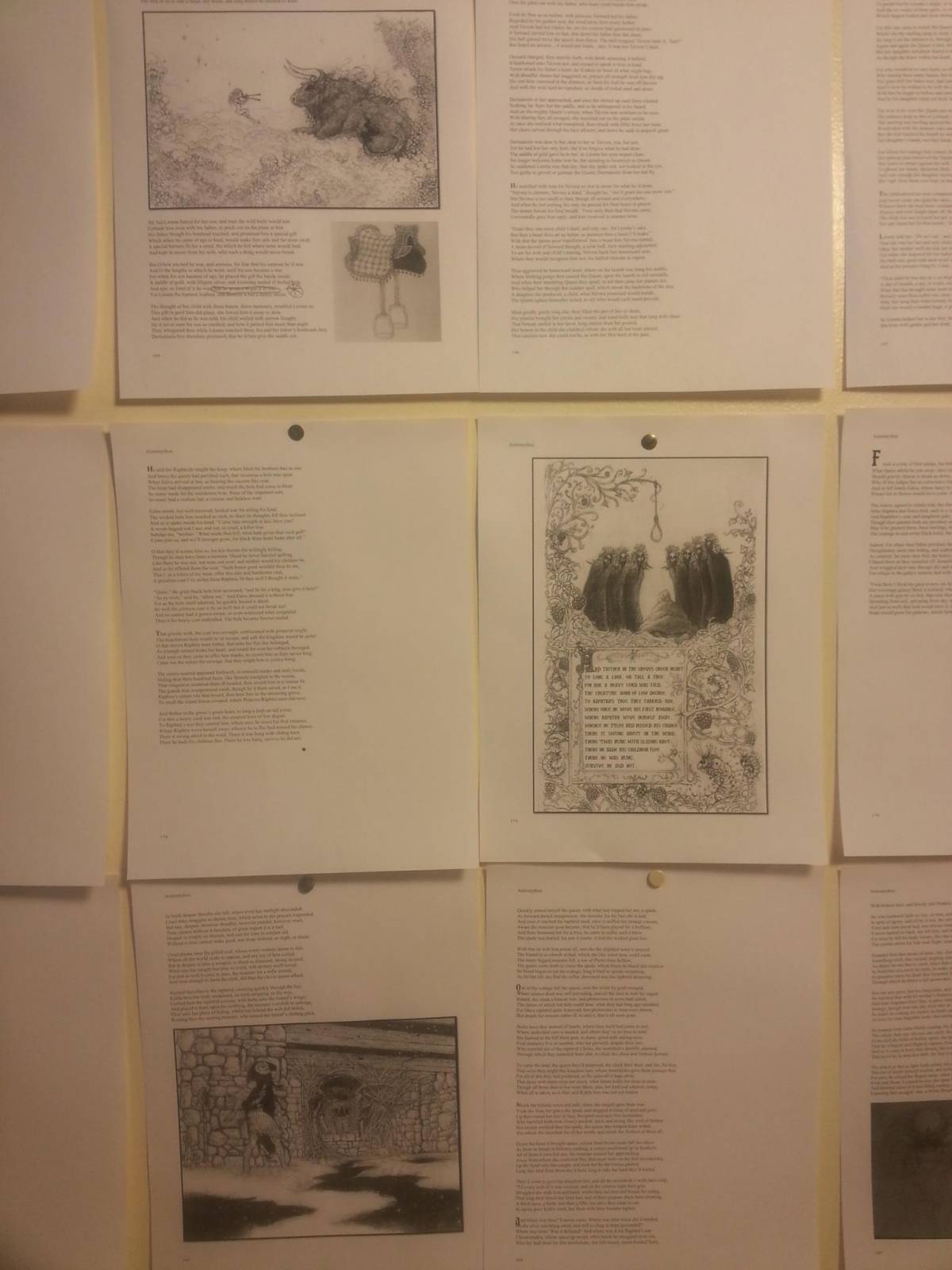
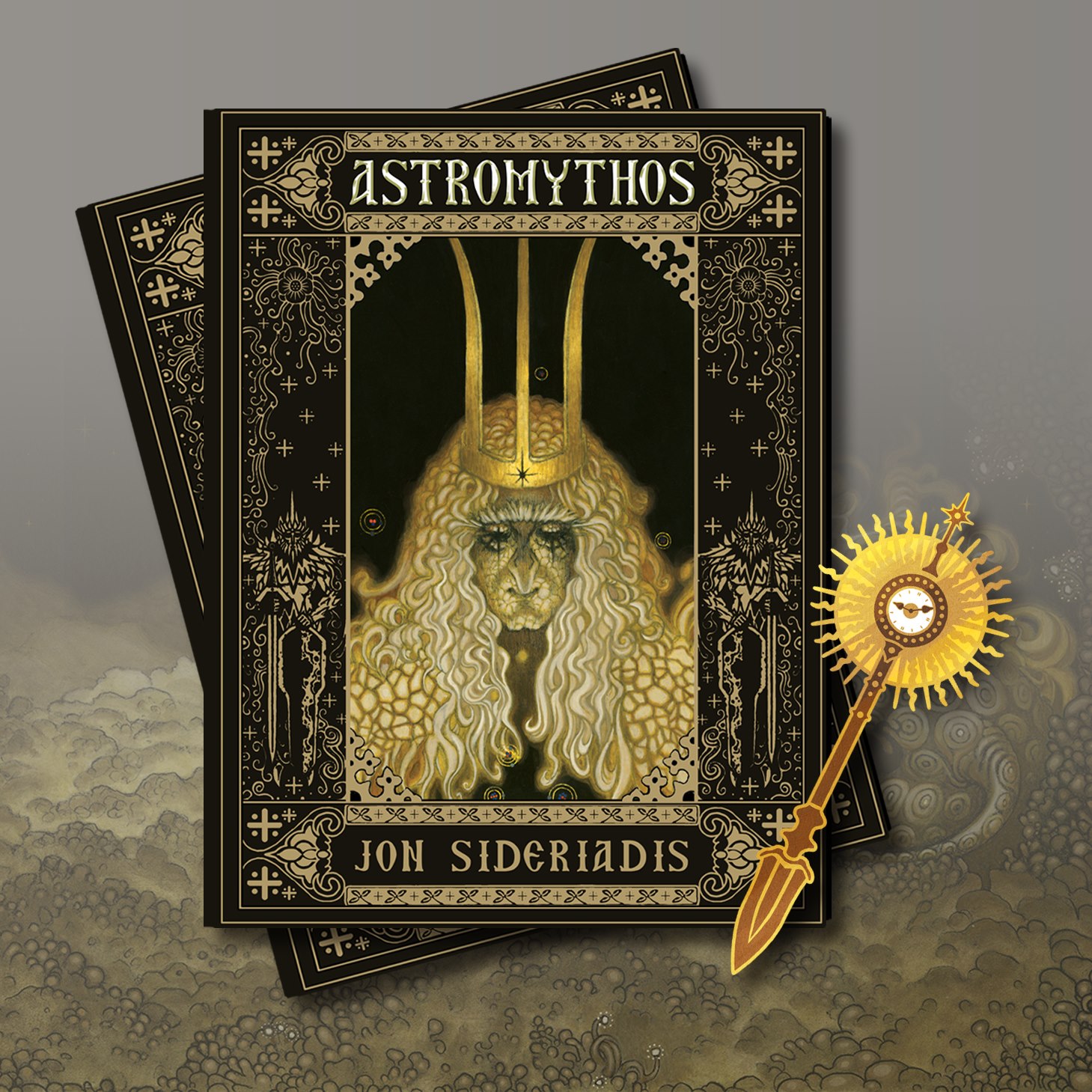



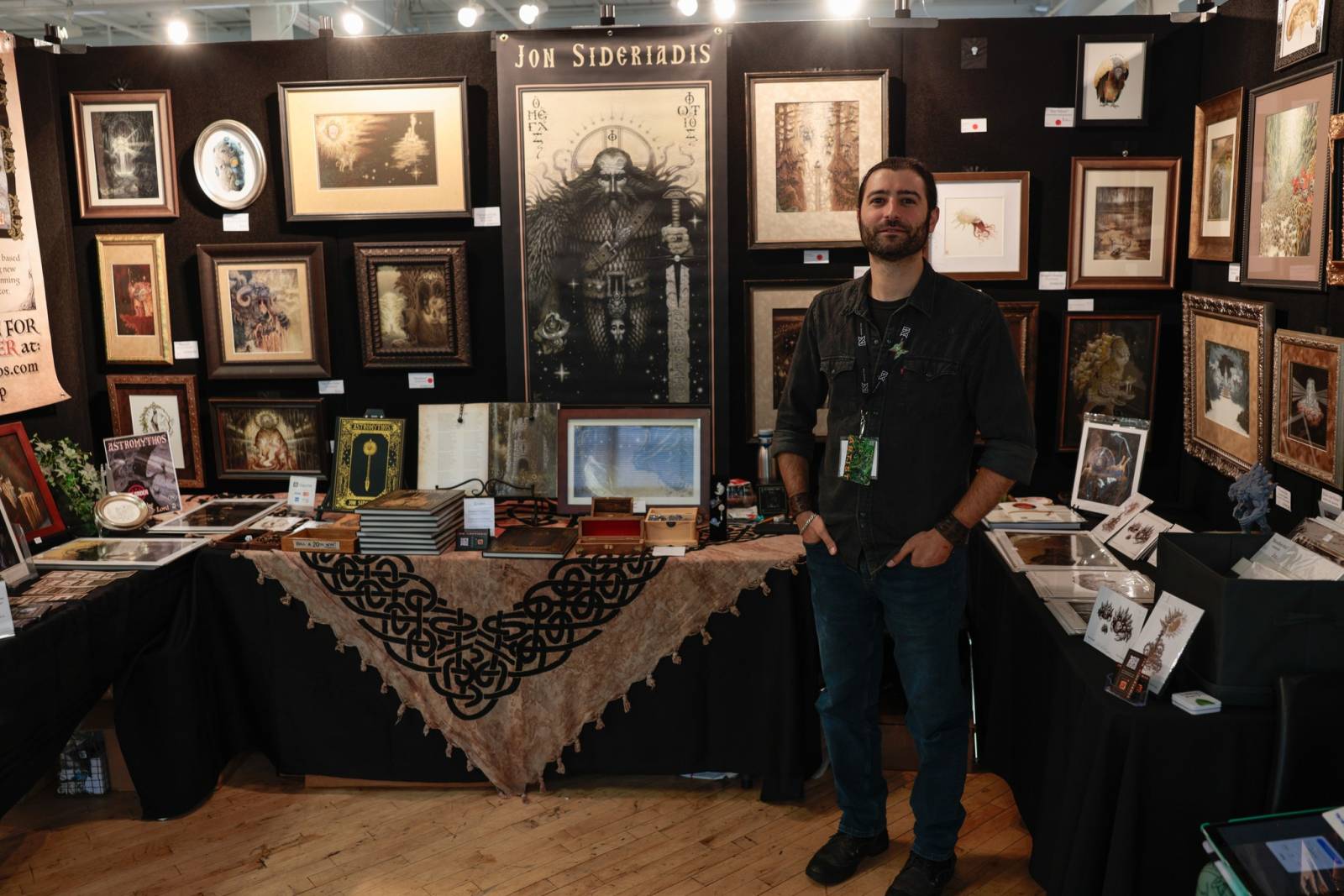
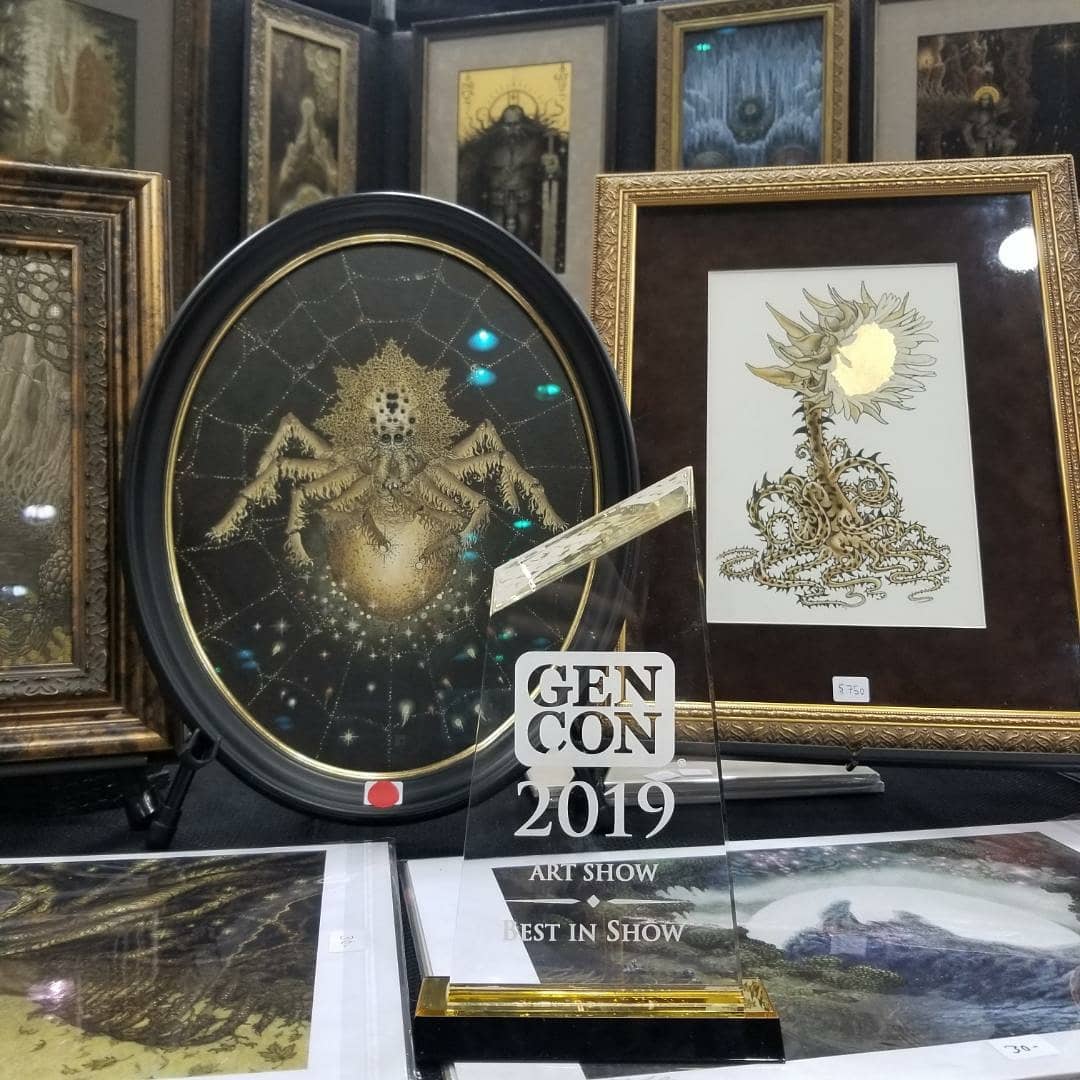
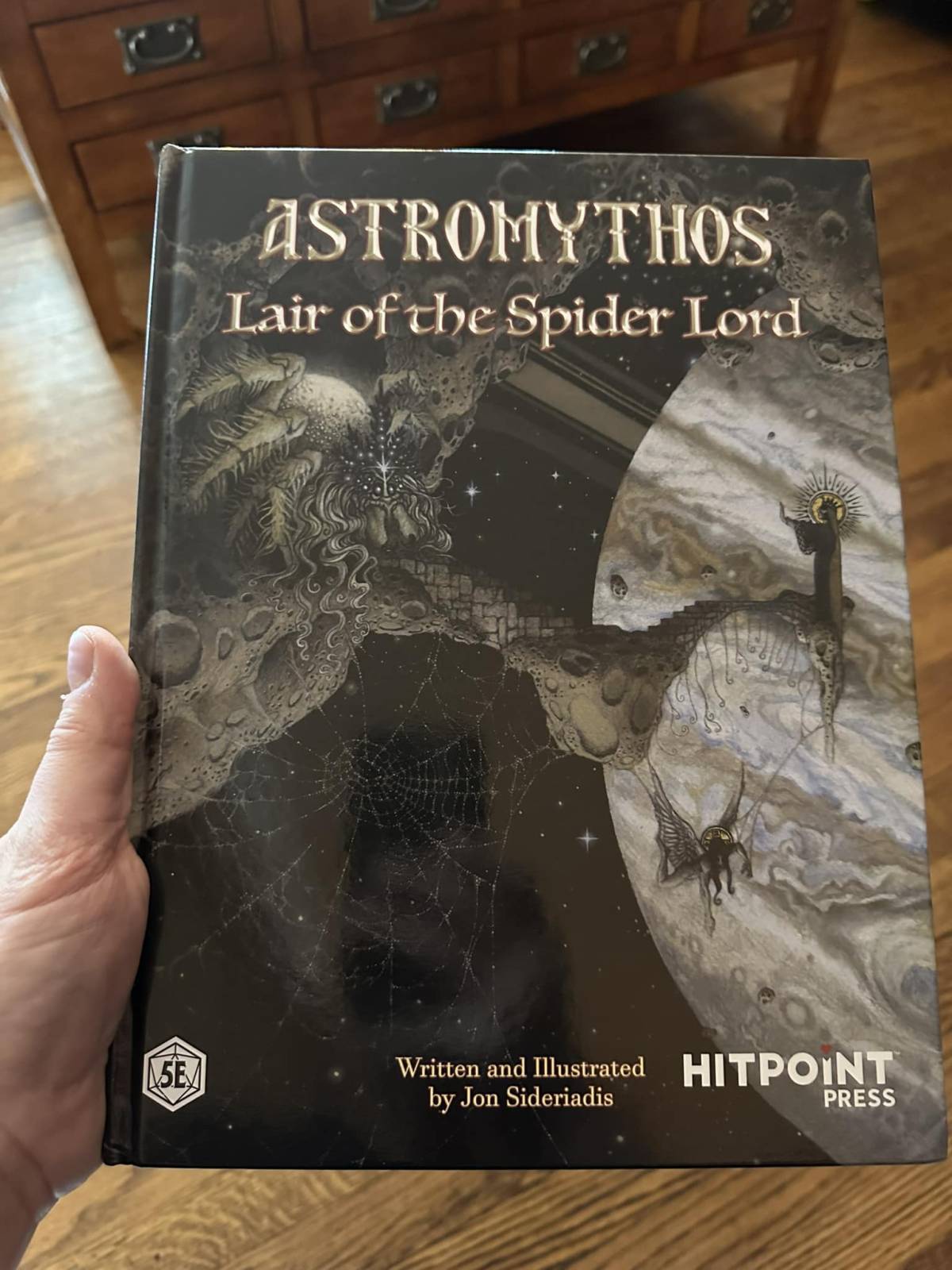




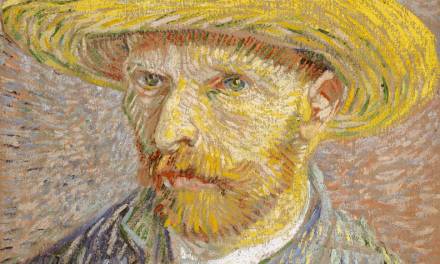
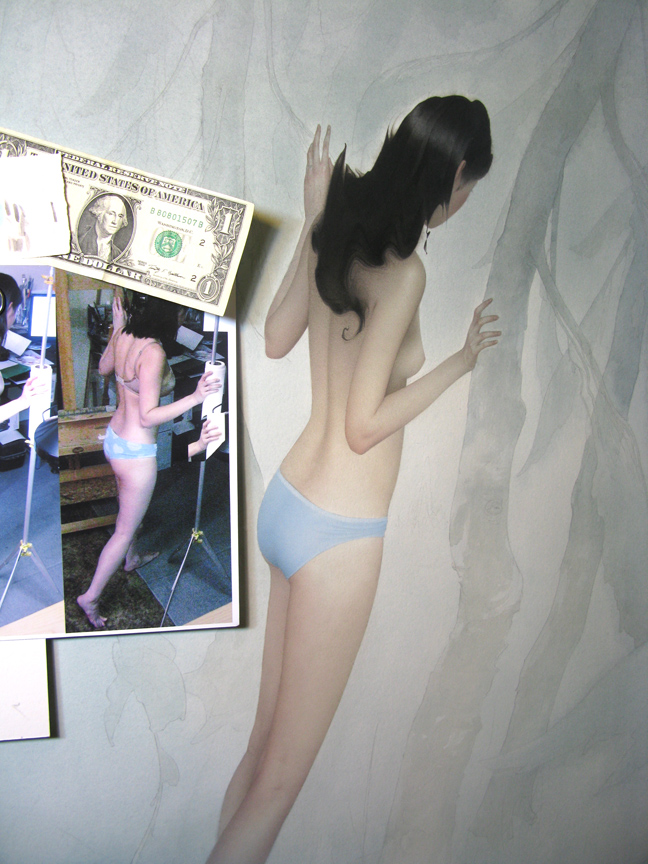
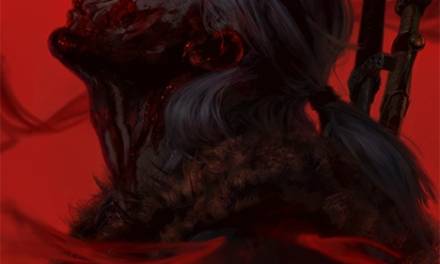
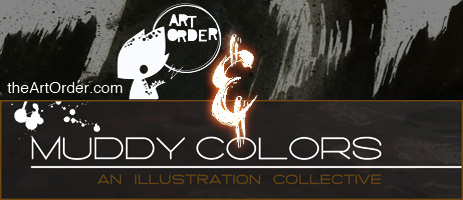

Oh my word this is an incredible article, thank you so so much for sharing!
You are so very welcome!
What a fascinating artist whom I’d never quite known about–maybe the name, but not the big intriguing story. Thank you for featuring him and his work.
best wishes
D0nnalee D-M
You are so welcome! Jon is such a great example of how passion and hard work can create an amazing life adventure!